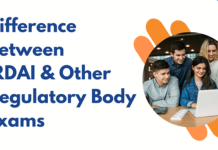Hockey is more than just a sport in India’s lively and diversified sports scene; it is a cherished symbol of national identity and historical success. For more than a century, hockey has carved out a place in India’s sports landscape, frequently overshadowed by cricket’s attraction. Even though cricket is extremely popular in India, hockey remains the beating heart of the country’s sporting culture, signifying a long-standing tie and a rich cultural tapestry between the two countries.

In this blog, we will look at the history of Indian hockey, including notable milestones and difficulties. We will examine the origins of this cherished sport, celebrate its significant successes, and debate the obstacles that have shaped its history.
The Genesis of Hockey in India
The history of hockey in India begins during the colonial era when British immigrants and soldiers brought the sport to the subcontinent in the middle of the 19th century. Hockey’s popularity eventually spread to the larger Indian people, although it was first limited to military quarters and the British elite. Calcutta (now Kolkata) saw the foundation of the first Indian hockey club in 1885, bringing hockey into Indian traditional sports culture. The creation of the Indian Hockey Federation (IHF) in 1925 was a milestone point in Indian hockey history. India’s first international competition took place during the 1928 Amsterdam Olympics, due in large part to the IHF organizing the maiden national championship. This marked the beginning of a phase that would define India’s hockey heritage.
The Golden Era: A Triumph of Indian Hockey
The years 1928–1956 were an unparalleled golden period in Indian hockey. India achieved a remarkable feat in the history of the sport during this period, winning six consecutive gold medals in the Olympics. This period was characterized by Indian players’ remarkable talent and tactical acumen as well as their strong sense of patriotism.
Dhyan Chand: The Maestro
When discussing the golden period of Indian hockey, one name stands out above the rest: Dhyan Chand. Dhyan Chand, dubbed the “Wizard of Hockey,” was a stick master with near-supernatural ball-handling prowess. Consider a player who glided over the field with easy ease, leaving defenders perplexed and fans amazed. His extraordinary achievements led India to three straight Olympic gold medals in 1928, 1932, and 1936, establishing his place in sporting history. Dhyan Chand’s impact on hockey continues to this day, as seen by the Padma Bhushan and the numerous hearts he inspired. His spirit is present in every flick of the wrist and goal scored.
Landmark Achievements
India’s hockey team made history with several remarkable accomplishments:
| Year | Event | Achievement |
| 1928 | Amsterdam Olympics | India’s debut on the Olympic stage; won the gold medal without conceding a single goal. |
| 1932 | Los Angeles Olympics | Scored 35 goals in two matches; secured another gold medal. |
| 1956 | Melbourne Olympics | Clinched its sixth consecutive Olympic gold, highlighting its dominance in the sport. |
The Post-Golden Era: Trials and Challenges
Despite its peak period, Indian hockey faced a series of difficulties in the following decades. The 1970s and 1980s marked a phase of decline, identified by the introduction of artificial turf, which presented an important adjustment for players familiar with natural grass fields. The sport also struggled with administrative flaws and a lack of investment, contributing to a decrease in performance.
The Decline in Performance
The 1976 Montreal Olympics represented a nadir for Indian hockey as the team dropped to secure a medal. Although the 1980 Moscow Olympics saw India win gold, the victory was marred by the lack of several strong teams due to the refusal led by the United States. The decline was intensified by frequent changes in leadership and internal strife within the Indian Hockey Federation.
Administrative and Structural Issues
The difficulties faced by Indian hockey were not bound to performance issues. Administrative ineffectiveness and structural problems within the governing bodies impeded the sport’s development. The Indian Hockey Federation’s ineptitude to adapt to modern demands and its lack of a logical long-term vision further worsened the decline.
The Revival: A New Dawn for Indian Hockey
Indian hockey has made a comeback in recent years because of a renewed emphasis on development and specialization. One of the significant initiatives in this rebirth was the establishment of the Hockey India League (HIL) in 2013. The league drew foreign players and coaches and gave emerging talent a stage on which to showcase their abilities, all while fostering a competitive atmosphere.
Recent Achievements
The resurgence of Indian hockey has been marked by several notable achievements:
| Year | Event | Achievement |
| 2014 | Asian Games | India’s victory ended a 16-year wait for an Asian Games title, signaling a return to form. |
| 2016 | Champions Trophy | They secure a silver medal, demonstrating their ability to compete against top-tier teams. |
| 2020 | Tokyo Olympics | The men’s team won bronze, their first Olympic medal in over four decades, rekindling hopes. |
The Rising Talent in Women’s Hockey
India’s women’s hockey team has achieved incredible progress, despite men’s hockey historically being the focus. In addition to earning remarkable victories in international competitions, the Indian women’s team has accomplished important benchmarks, such as qualifying for the Olympics. Women’s hockey has the potential to increase India’s sports accomplishments, and this success reflects the increased focus on gender equality.
Developing Upcoming Talent: From the Ground Up and Beyond
The development of youthful talent and strong grassroots growth are essential to Indian hockey’s future. Identifying and training potential players at a young age is critical to the sport’s continued growth. Training facilities, talent scouting projects, and hockey academies are critical in providing athletes with the information and experience needed to succeed at the highest levels.
Government Initiatives and Support
The Indian government, in collaboration with other sporting organizations, has boosted financing and support for hockey. The “Khelo India” program, launched in 2018, aims to identify young talent and promote community sports. This program has hockey-specific elements that guarantee a constant supply of talented players.
Technological Progress
Modern sports now stand on the incorporation of innovation and technology in training and performance monitoring. To improve player performance, Indian hockey has embraced technological breakthroughs like data analytics, video analysis, and sports science. With the use of these technologies, Indian hockey players may play the game more effectively and strategically, which will help them succeed internationally.
Cultural Impact and Legacy
Beyond the playing field, hockey has a significant cultural and social impact on India. Thanks to the media, literature, and popular culture that have honored the sport’s legends and accomplishments, it has served as a source of national pride. Narratives of unsung heroes and their ascent to fame exemplify the capacity for positive change in sports and the lasting influence of hockey in India.
Media and Arts Representation
Hockey’s representation in media and arts highlights its significance in Indian culture. Films like “Chak De! India” and various documentaries have brought attention to the sport’s history and challenges, fostering a greater appreciation for hockey. These portrayals inspire new generations and keep the spirit of the game alive.
Community Engagement and Grassroots Heroes
Promoting hockey requires a strong commitment from the community. Young athletes are given the chance to succeed through events and initiatives organized by local clubs, non-profits, and sports organizations. Indian hockey is embodied by these inspiring themes of hope and endurance, told through the experiences of everyday heroes rising above adversity.
Forward-Looking: Establishing a Sustainable Future
A cooperative effort from all parties involved—players, coaches, officials, sponsors, and fans—is needed to ensure Indian hockey has a viable future. Key areas of focus include:
Talent Development and Infrastructure
For sports to succeed in the long run, infrastructure, and talent development investments are essential. Building hockey academies, enhancing facilities for training, and offering top-notch coaching will guarantee a constant supply of talented players. With the support of these programs, Indian hockey will be able to take the lead once again in international sports.
Professionalization and Governance
Establishing an efficient and successful system requires professionalizing hockey’s governance and management. Effective resource management, strategic planning, and transparent administration will improve hockey organizations’ performance and advance the sport.
Encouraging Diversity and Inclusivity
The popularity and influence of hockey will increase if inclusion and diversity are promoted. In addition to promoting gender equality, initiatives to increase participation from underrepresented populations and areas will enhance the sport and further its general growth.
Fostering a Sports Culture
Maintaining the popularity of hockey requires cultivating a culture that appreciates and honors the sport. Media campaigns, community activities, and educational institutions should all stress the value of sports and physical exercise. Celebrating hockey heroes and interacting with supporters will make the sport’s environment lively and encouraging.
Prepping for Banking and Government Exams with ixamBee
Prospective candidates navigating the competitive terrain of banking exams, including IBPS PO, IBPS Clerk, IBPS SO, SBI Clerk, SBI SO, and SBI PO, need a firm grasp of the exam syllabus to tailor their preparation effectively. In various bank exams, a fundamental understanding of basic financial changes that have occurred with the presentation of the Union Budget is needed, particularly in the General Awareness section. ixamBee is dedicated to offering aspirants resources beyond traditional study materials. The provision of numerous free mock tests, mirroring the actual exam environment, enables candidates to assess their strengths and weaknesses. Additionally, access to previous year’s papers assists in understanding exam trends and refining strategies accordingly. The expert faculty at ixamBee, comprising experienced educators and industry professionals, ensures aspirants receive high-quality guidance. Interactive live classes, complimentary mock tests, doubt resolution sessions, and personalized feedback further enrich the learning process.”
Conclusion
India’s national sport, hockey, represents the nation’s spirit of sportsmanship and cultural heritage. Hockey’s history in India spans its debut from colonial times to its heyday of supremacy, through setbacks and comebacks. The sport’s history demonstrates the persistence and zeal of those who have contributed to its heritage.
As India strives for hockey success, the emphasis on professionalization, grassroots growth, and technical advancements will have a significant impact on the sport’s future. Indian hockey has a chance to become a global power again if it can find fresh life and maintain its dedication to developing talent. The tale of hockey in India is one of inspiration, optimism, and promise, inspiring the next generation to continue this legacy.
Preparing for the SBI PO exam? Ace your preparation with ixamBee’s SBI SO AMS online course, SBI PO Prelims mock tests, and SBI PO Prelims PYP! Our expert-curated target banking online course provides comprehensive study material, live classes, and mock tests designed to boost your performance. Don’t miss the chance to practice with free SBI PO mock tests and analyze your progress. Start your SBI PO journey with ixamBee today!
At ixamBee, we specialize in providing comprehensive online courses for government exams and online courses for government jobs. Our expertly designed courses for government jobs cater to a wide range of upcoming government exams. Whether you’re preparing for specific courses for government exams or seeking general guidance, ixamBee offers the resources like Beepedia previous year papers, SSC CGL, SSC CHSL, SSC MTS and other mock tests to succeed in exams like RBI Grade B, SEBI Grade A, NABARD Grade A, RRB NTPC, SSC MTS, NIACL Assistant, and more.
Also Read:
Best Motivational Books for Students
Promotion Structure in Banks: Everything You Need to Know!
List of Space Research Centres in India













